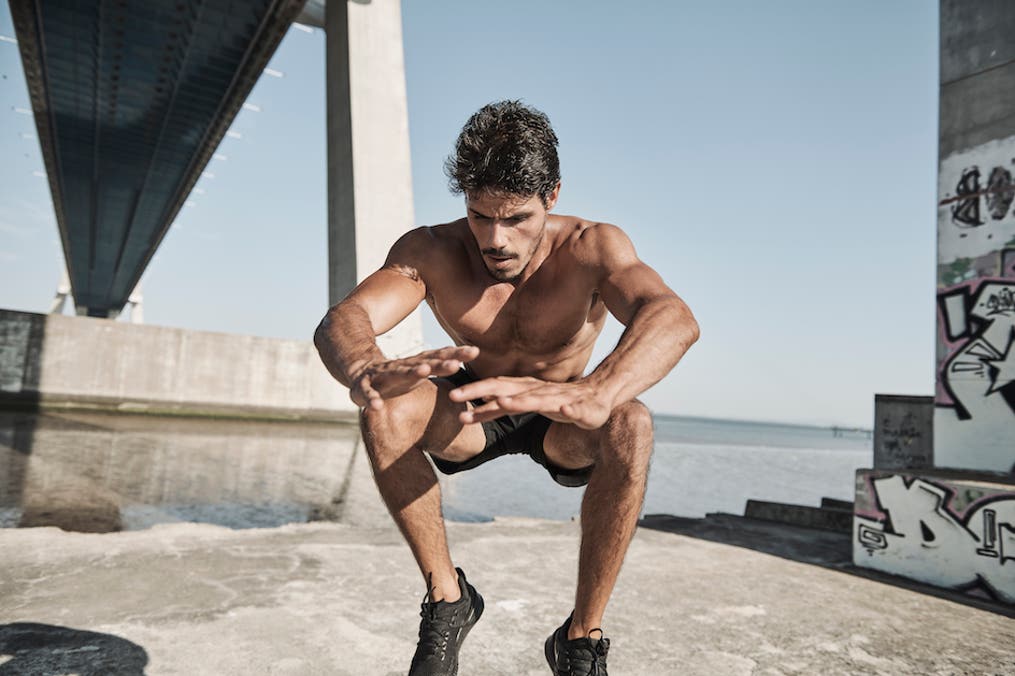There are few injuries more debilitating than knee pain. It can stop you running, weight training or even doing yoga. Taking measures to avoid knee pain is therefore crucial to keep your performance on track.
Knee pain is not caused by your knees
Knock knees predispose you to ACL tears, stress fractures, as well as runners’ knees and pain around the kneecap or the back of your knees. Knock knees, or a valgus collapse, occur when the knees cave in during all forms of activities, like running, walking, squatting or any other lower body exercise. As a result, the knees move inwards and the legs form an “X” instead of being straight. This creates pressure on the knee joint itself, as well as the structures that support it like the ligaments and tendons.
The knee itself is a simple joint. It is stabilized by many tendons, ligaments and muscles and thus only has limited range of motion. Knee pain is likely not caused by the knee itself. Rather, the origin lies above or below the knee joint.
If we look at the anatomy, then we see that the femur (thigh bone) and tibia (shin bone) attach to the knee. Because the knee mostly just bends and extends, any stress that is placed on the knee is likely caused by movement of the femur or tibia. Knock knees are caused by rotation of the thigh or the shin bone.
Instead of looking at the knees for the cause of the pain, we therefore need to take a close look at the joints that move the femur and tibia and really cause knock knees. Those two joints are the hip and the ankles.
#1 - Your hips are unstable
The hips can move a lot more than the knees; they bend, extend, abduct, adduct and rotate.
If one joint doesn’t work properly, another joint will compensate for this lack and develop a dysfunction. Thus, if your hip doesn’t function like it should, your knees will make up for it. Because the hip controls the femur, a lack of hip stability can cause knock knees or knee valgus. The joint, ligaments and tendons are repetitively strained and overused in the valgus position. Therefore, unstable hips cause knee pain.
Knock knees are caused by weak extensors, abductors and external rotators of the hip. If these muscles don’t activate properly, then the femur rotates internally and the knee falls into a valgus position. To prevent this, the muscles of the hip need extra care in your training.
Focus on the following warm up routine to effectively train the weak muscles of the hip and prevent knee pain:
Single Leg Hip Raises: 3 sets of 10-15 repetitions to train your glutes and stabilize your hips.
Side Plank Crunches: 3 sets of 10-15 repetitions to train the hip abductors and external rotations to prevent knock knees.

#2 - You have flat feet
Flat feet are becoming increasingly common and restrictive footwear is likely to blame. Your feet are like the foundation of a house; if the foundation is flawed, then everything above it will lack support.
If the muscles in your feet are weak, then the knees will tilt inwards. A flat arch causes knee pain because it internally rotates the tibia (shinbone) and brings your knee into a valgus position. To avoid this, your feet need extra attention in your training.
Focus on the following routine to effectively train the arch of your feet and stabilize your knees:
Foot Strength Exercise #1: Raise your big toe.
Foot Strength Exercise #2: Raise your outer toes.
Do both exercises for 3 rounds of 5 repetitions.
Let's recap:
Knee pain is not a matter of just merely looking at the knees for the origin of the pain. It is important to assess the hips and feet to really rehabilitate and prevent knee injuries.